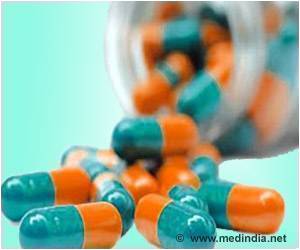also involved researchers at the Oregon Health and Science University, the Oregon National Primate Research Center and the University of California San Francisco.
“This gene-therapy approach targets changes in dopamine function in the brain’s mesolimbic reward pathway that are caused by chronic alcohol use,” says co-principal investigator and co-corresponding author Krystof Bankiewicz, MD, PhD, professor of Neurological Surgery and director of the Brain Health and Performance Center at Ohio State. “Our findings suggest that this treatment can prevent relapse without requiring long-term treatment adherence by patients.”
People with alcohol use disorder (AUD) commonly experience repeated cycles of abstinence followed by relapse, even when using one of the few FDA-approved drug therapies, Bankiewicz notes.
Advertisement
Excessive alcohol use alters certain nerve tracts in the brain that involve the release of the neurotransmitter dopamine. These neurons make up the mesolimbic reward pathway, which plays a major role in alcohol and drug addiction.
These alterations become more pronounced as AUD develops. They include reduced levels of dopamine release, reduced sensitivity of dopamine receptors and increased dopamine uptake. These changes lead to below-normal levels of dopamine in the pathway.
Scientists think this “hypodopaminergic” state can compel excessive alcohol users to resume drinking after periods of abstinence.
“At this time, there are no therapies that target circuits in the brain that are altered by sustained, heavy alcohol use,” says co-principal investigator and co-corresponding author Kathleen Grant, PhD, chief and professor of Behavioral Neuroscience at the Oregon National Primate Research Center.
This study used an accepted rhesus macaque model of AUD to examine the practicality and effectiveness of delivering a viral vector into the brain to induce continuous expression of GDNF, diminish alcohol use and prevent post-abstinence resumption of drinking.
Eight male rhesus macaques were involved; the vector was an adenoassociated virus vector that carried a gene for human glial-derived neurotrophic factor (AAV2-hGDNF).
All eight animals were first habituated to the consumption of 4% alcohol. Then four animals were infused with the hGDNF vector directly into the VTA, located in the floor of the midbrain. Neurons in the VTA connect with the mesolimbic reward pathway. The remaining four animals served as controls. They were infused with sterile saline using the same surgical procedure.
- The infusion of AAV2-hGDNF significantly blunted the intake of alcohol across multiple 4-week abstinence and 4-week alcohol-reintroduction cycles;
- Blood ethanol levels were undetectable in GDNF-treated subjects and remained undetectable for most weeks through the study’s end;
- Control subjects showed consistently elevated monthly and weekly alcohol intake and blood ethanol levels across cycles, as a group and individually.
Alcohol Use Disorder: Facts & Figures
References :
- GDNF gene therapy for alcohol use disorder in male non-human primates – (https://www.nature.com/articles/s41591-023-02463-9)
- Understanding Alcohol Use Disorder – (https://www.niaaa.nih.gov/publications/brochures-and-fact-sheets/understanding-alcohol-use-disorder)
- Deaths from Excessive Alcohol Use in the United States – (https://www.cdc.gov/alcohol/features/excessive-alcohol-deaths.html)
Source: Eurekalert



